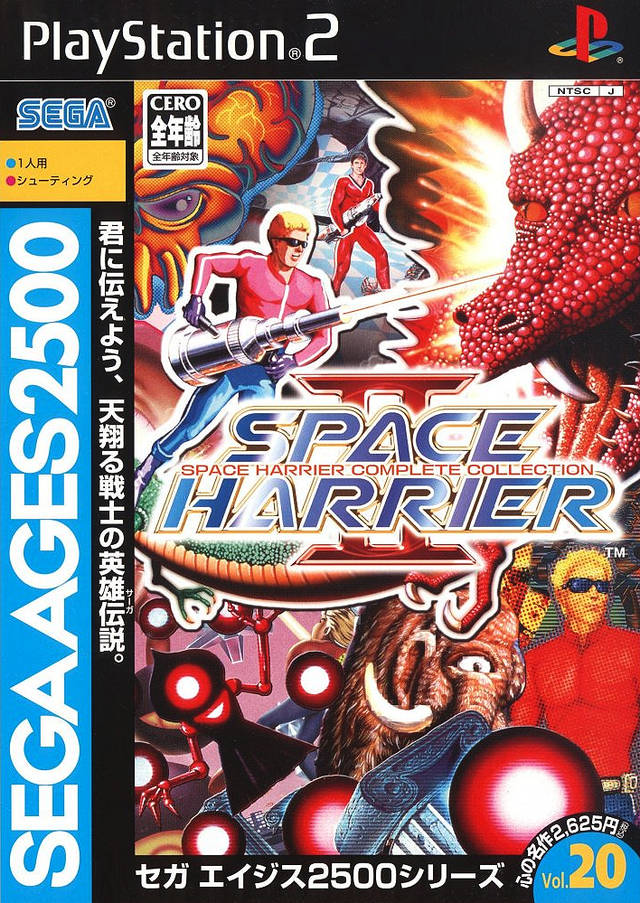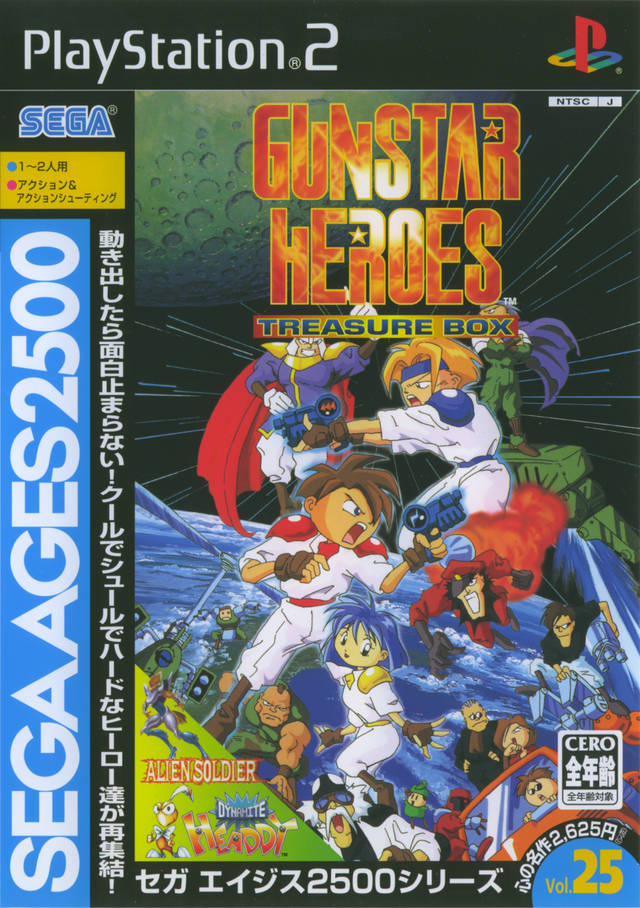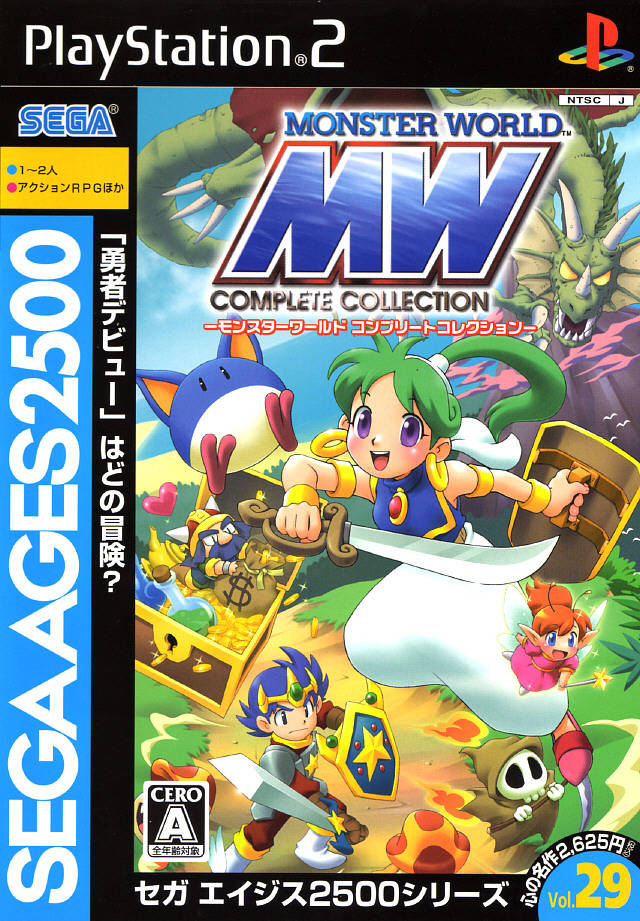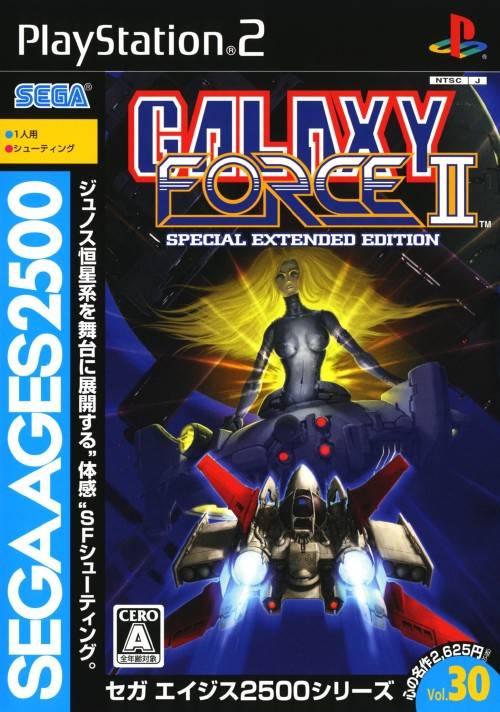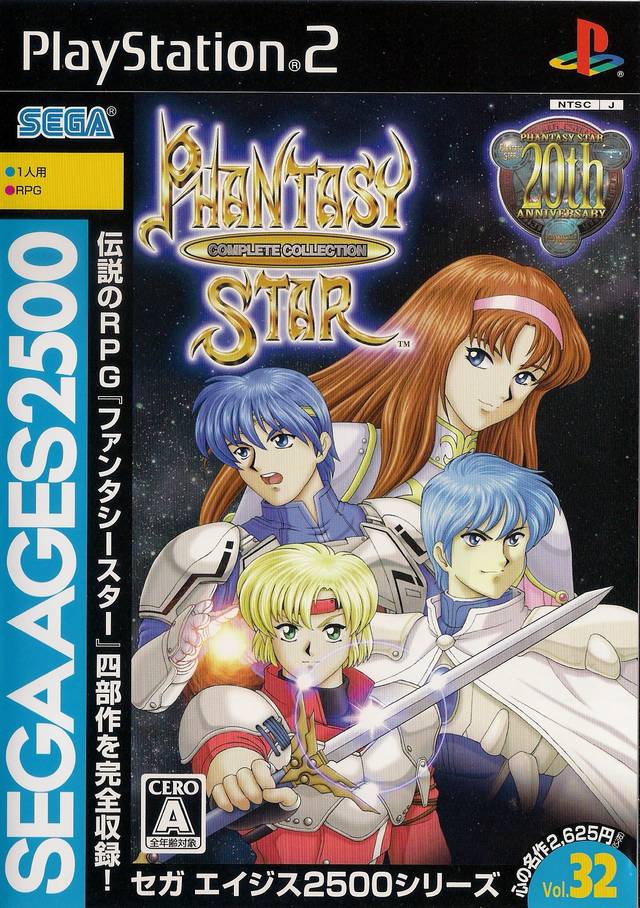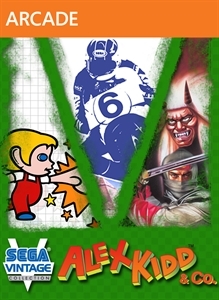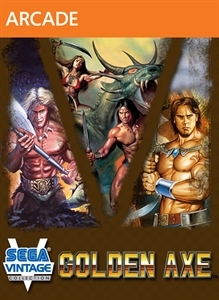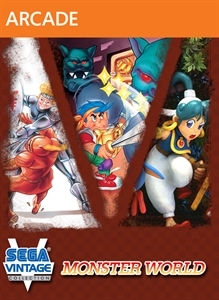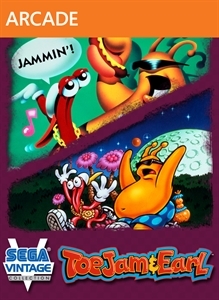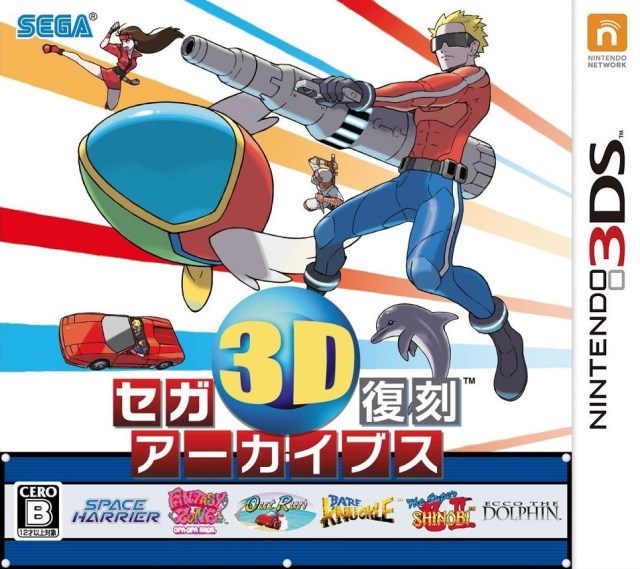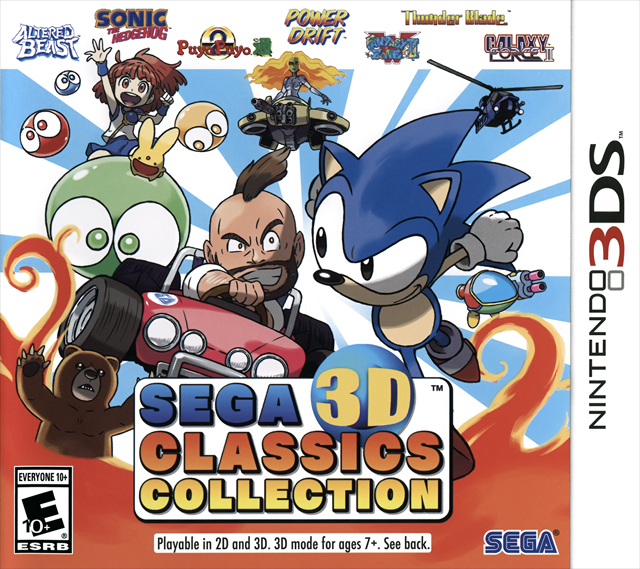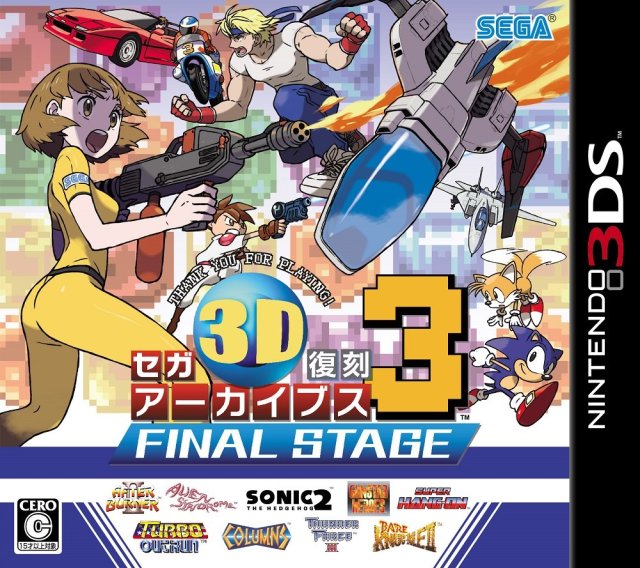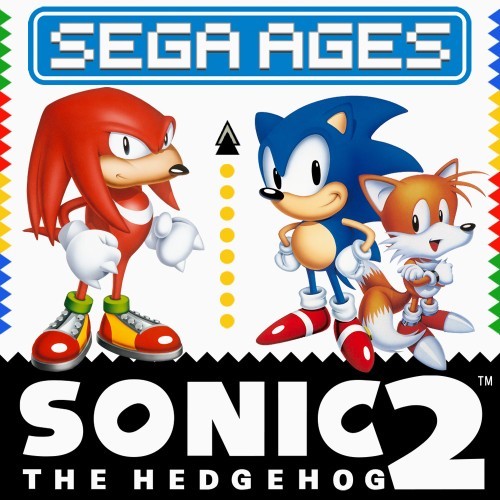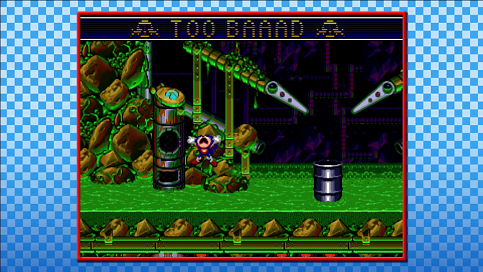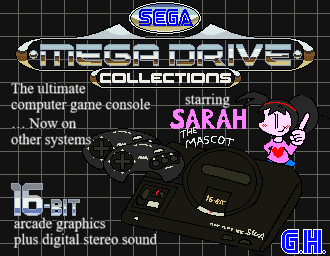
EDITOR'S NOTE:

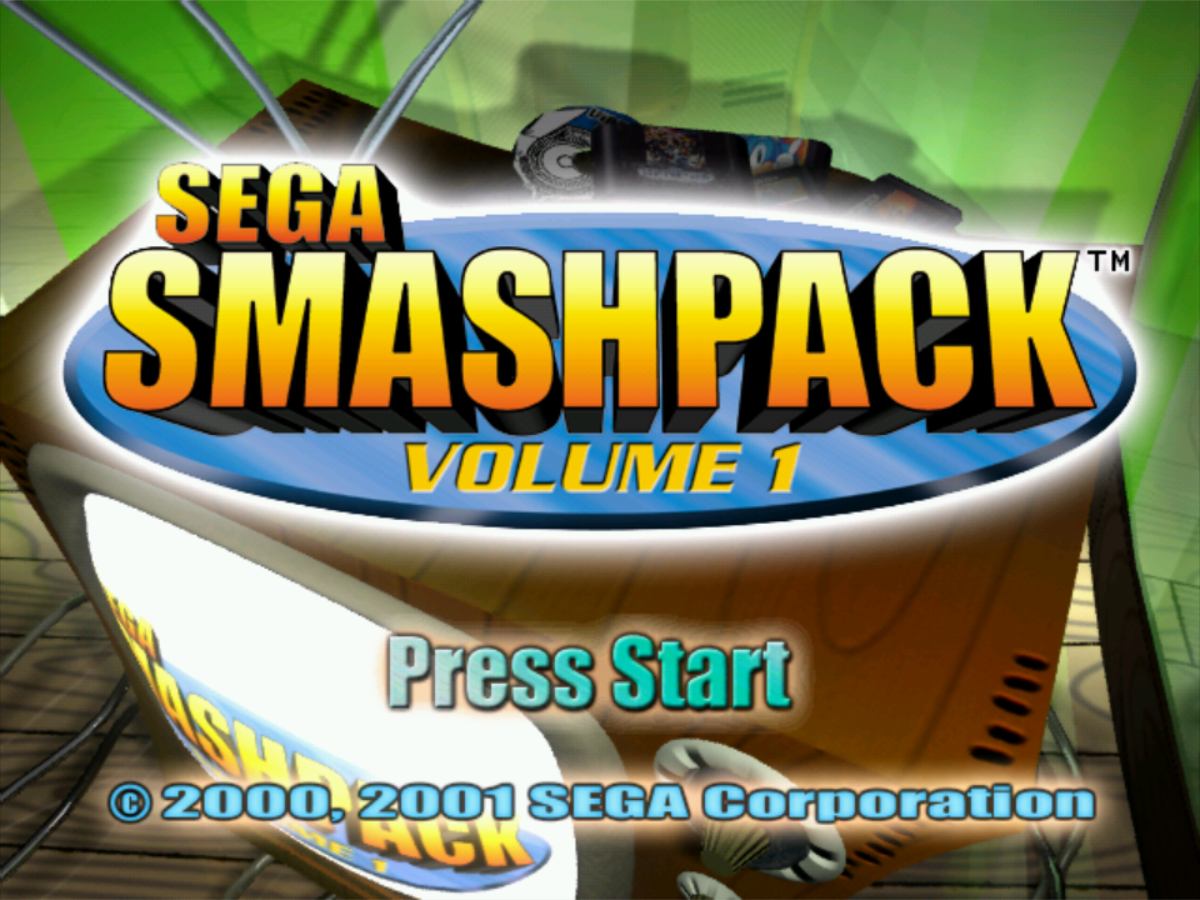
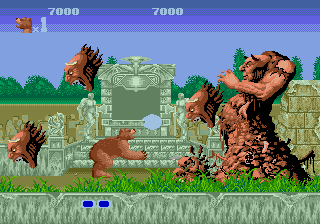 Altered Beast (1988 / 1989) |
 Phantasy Star II (1989 / 1990) |
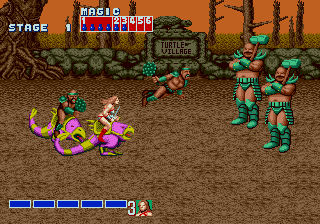 Golden Axe (1989) |
 The Revenge of Shinobi (1989) |
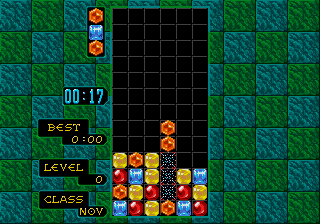 Columns (1990) |
 Sonic the Hedgehog (1991) |
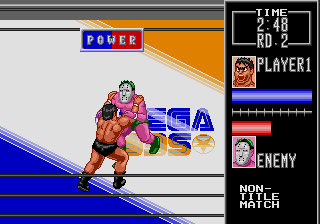 Wrestle War (1991) |
 Shining Force: The Legacy of Great Intention (1992 / 1993) |
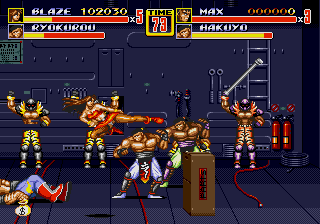 Streets of Rage II (1992 / 1993) |
 Vectorman (1995) |
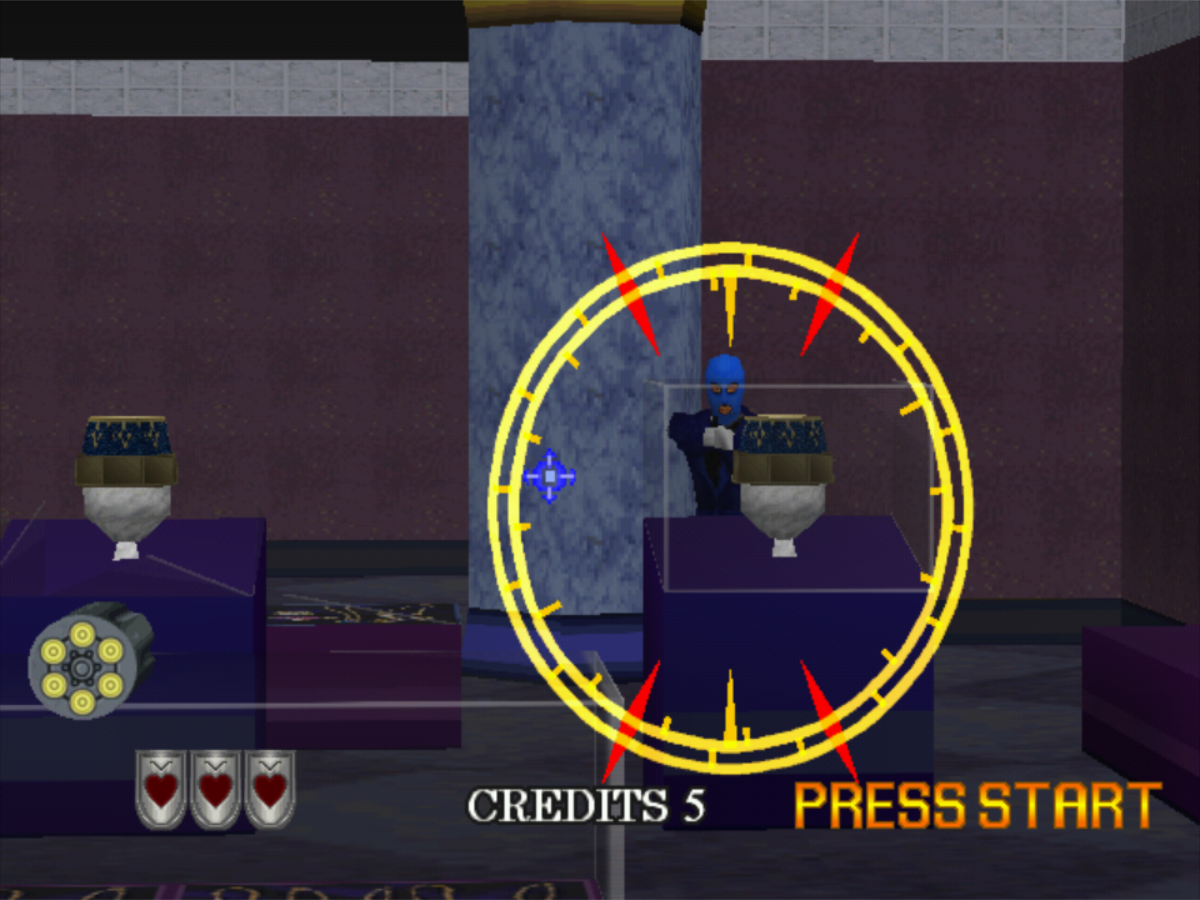 Virtua Cop 2 (1995) |
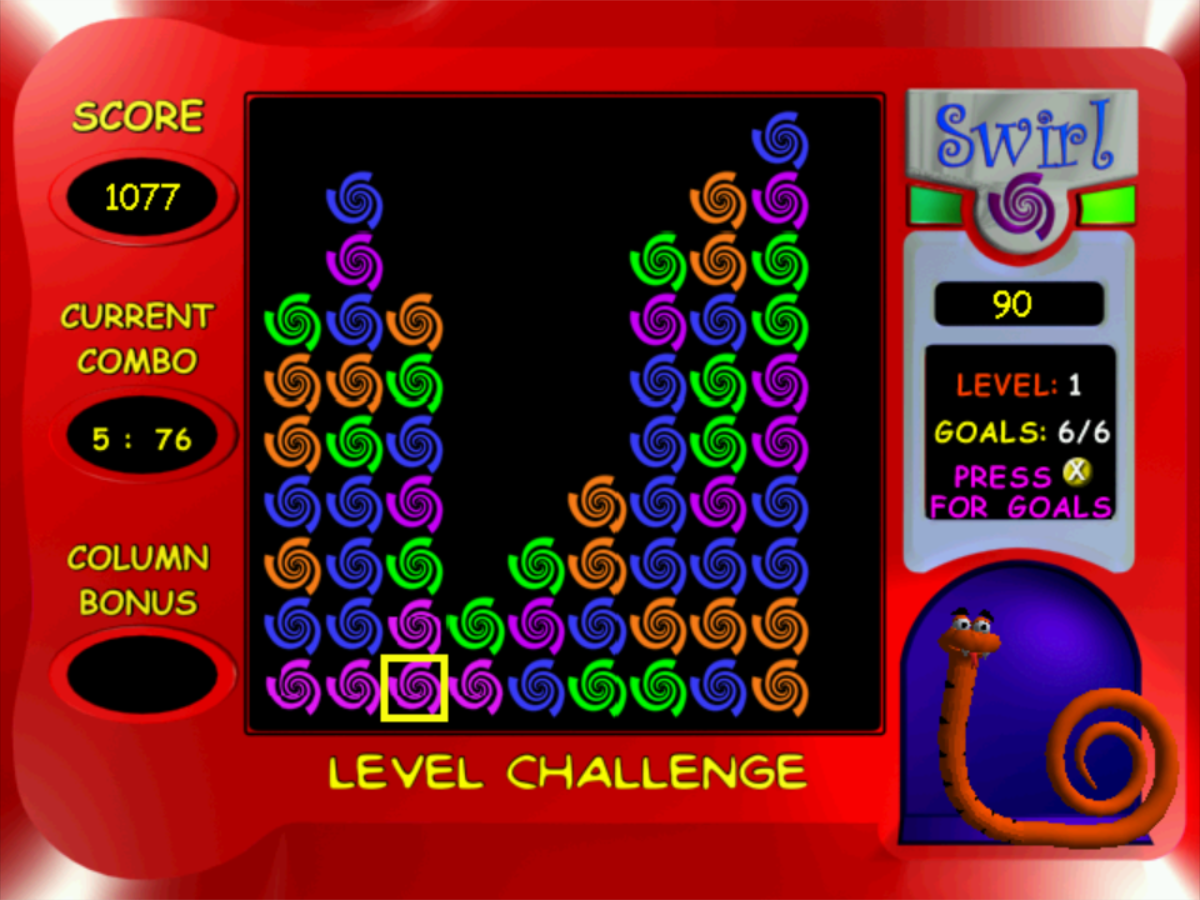 Sega Swirl (1999) |


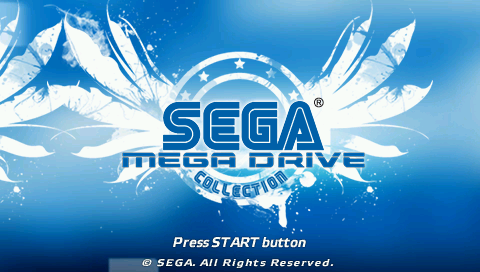
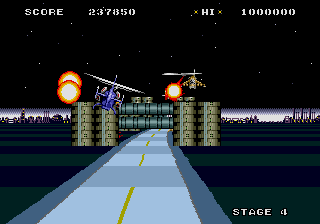 Super Thunder Blade (1988 / 1989) |
 Altered Beast (1988 / 1989) |
 Alex Kidd in the Enchanted Castle (1989) |
 Phantasy Star II (1989 / 1990) |
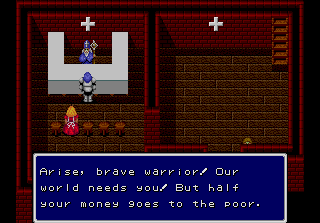 Sword of Vermilion (1989 / 1991) |
 Golden Axe (1989) |
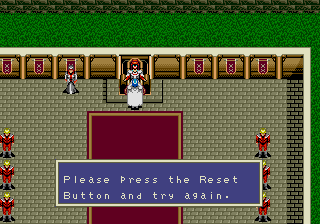 Phantasy Star III: Generations of Doom (1990 / 1991) |
 Columns (1990) |
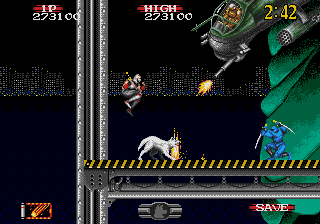 Shadow Dancer: The Secret of Shinobi (1990 / 1991) |
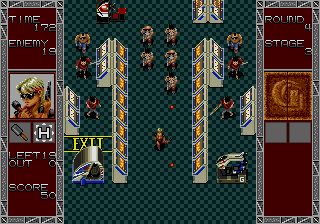 Gain Ground (1991) |
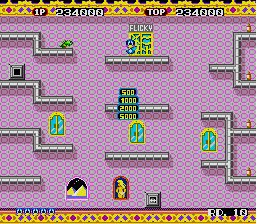 Flicky (1991) |
 Bonanza Bros. (1991) |
 Sonic the Hedgehog (1991) |
 Decap Attack (1991) |
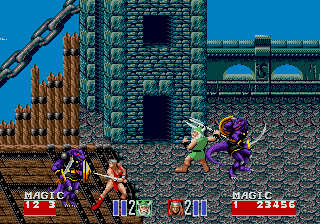 Golden Axe II (1991 / 1992) |
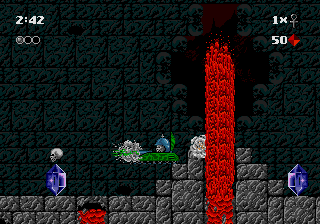 Kid Chameleon (1992) |
 Sonic the Hedgehog 2 (1992) |
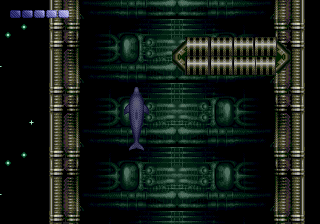 Ecco the Dolphin (1992 / 1993) |
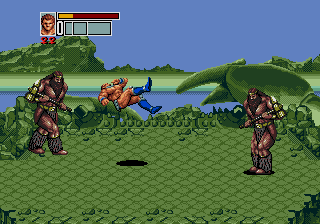 Golden Axe III (1993) |
 Shinobi III: Return of the Ninja Master (1993) |
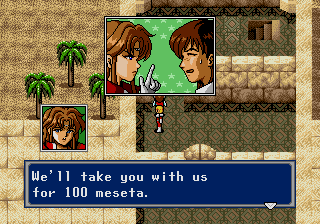 Phantasy Star IV: The End of the Millennium (1993 / 1995) |
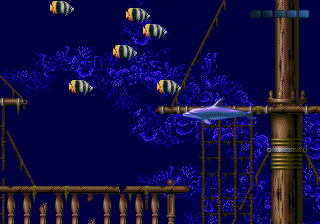 Ecco: The Tides of Time (1994) |
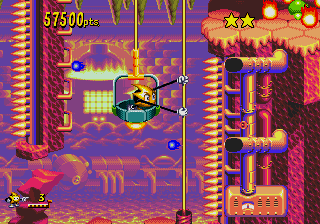 Ristar (1995) |
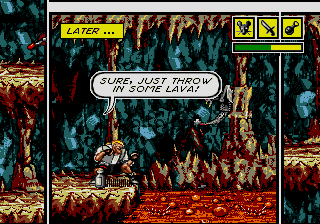 Comix Zone (1995) |
 Ecco Jr. (1995) |
 Vectorman (1995) |
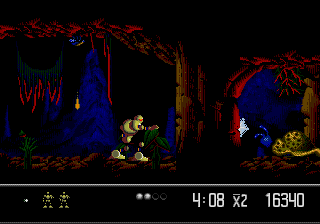 Vectorman 2 (1996) |
 Virtua Fighter 2 (1997) |
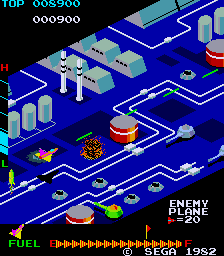 Zaxxon (1982) |
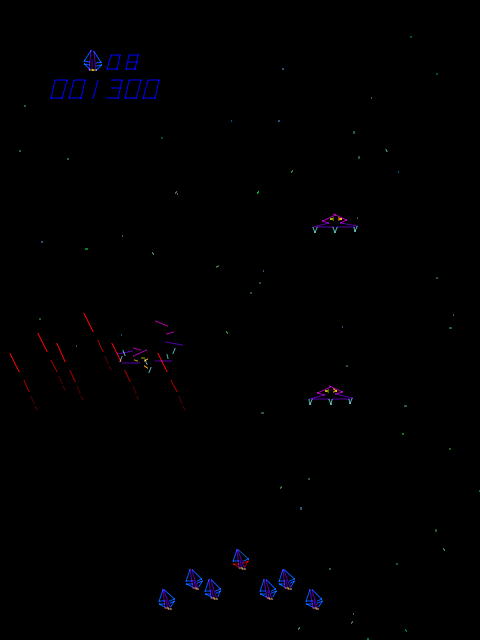 Tac/Scan (1982) |
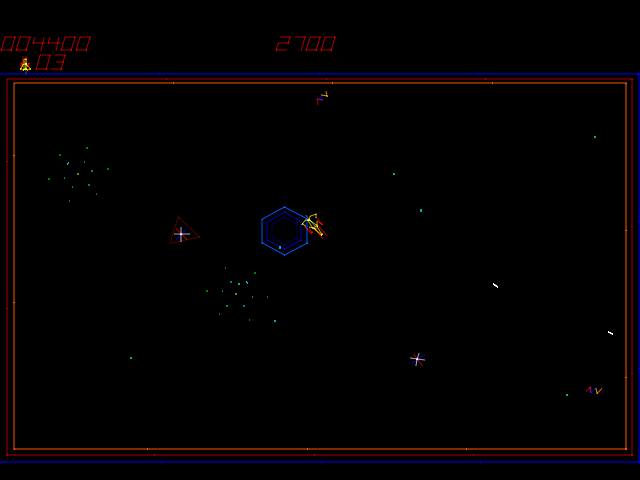 Zektor (1982) |
|
|
 Future Spy (1984) |
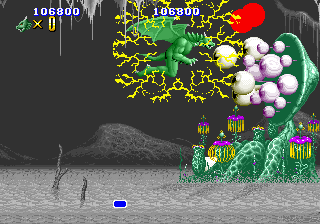 Altered Beast (1988) |
|
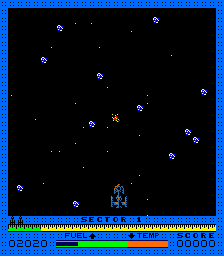 Astro Blaster (1981) |
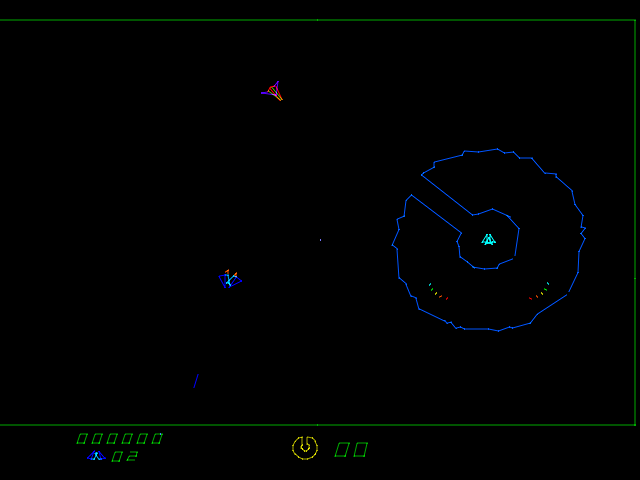 Eliminator (1981) |
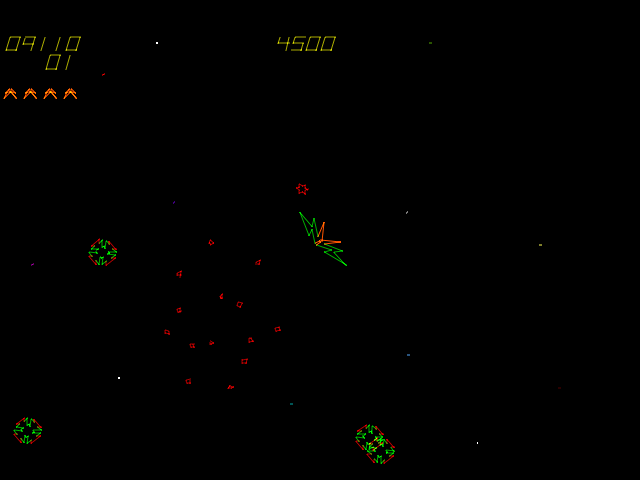 Space Fury (1981) |
|
|
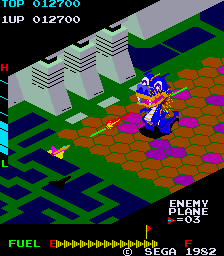 Super Zaxxon (1982) |
 Tip Top (1983) |
|
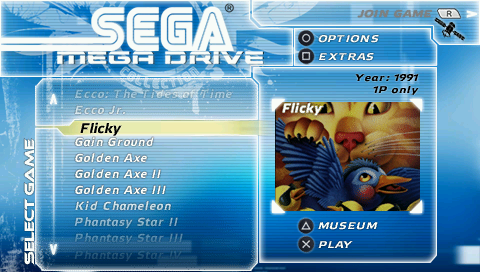
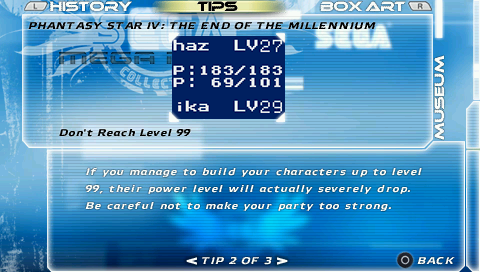
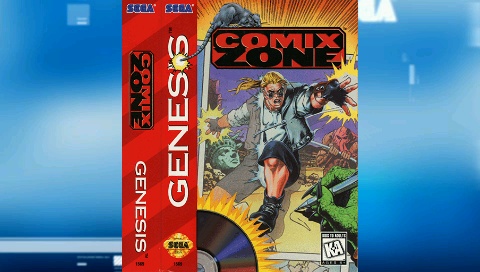
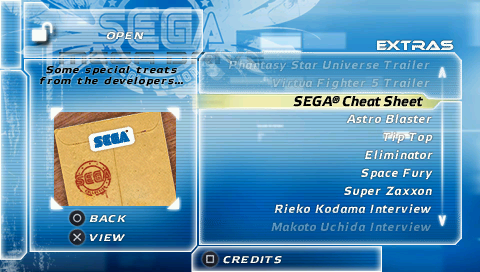

 Super Thunder Blade (1988 / 1989) |
 Altered Beast (1988 / 1989) |
 Alex Kidd in the Enchanted Castle (1989) |
 Phantasy Star II (1989 / 1990) |
 Golden Axe (1989) |
 Phantasy Star III: Generations of Doom (1990 / 1991) |
 Columns (1990) |
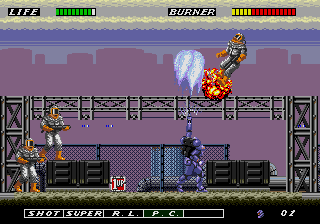 ESWAT: City Under Siege (1990) |
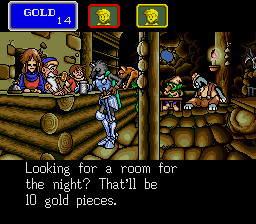 Shining in the Darkness (1991) |
 Gain Ground (1991) |
 Flicky (1991) |
 Bonanza Bros. (1991) |
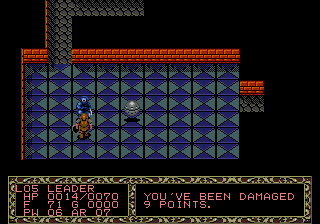 Fatal Labyrinth (1991) |
 Sonic the Hedgehog (1991) |
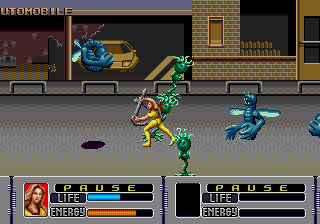 Alien Storm (1991) |
 Streets of Rage (1991) |
 Decap Attack (1991) |
 Golden Axe II (1991 / 1992) |
 Shining Force: The Legacy of Great Intention (1992 / 1993) |
 Kid Chameleon (1992) |
 Sonic the Hedgehog 2 (1992) |
 Ecco the Dolphin (1992 / 1993) |
 Streets of Rage II (1992 / 1993) |
 Golden Axe III (1993) |
 Shinobi III: Return of the Ninja Master (1993) |
 Shining Force II (1993 / 1994) |
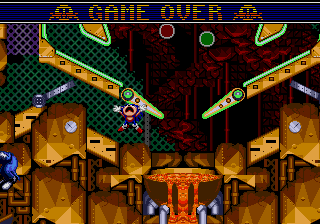 Sonic the Hedgehog Spinball (1993) |
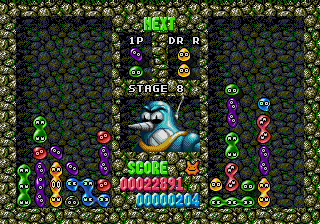 Dr. Robotnik's Mean Bean Machine (1993) |
 Phantasy Star IV: The End of the Millennium (1993 / 1995) |
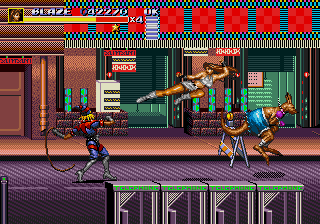 Streets of Rage 3 (1994) |
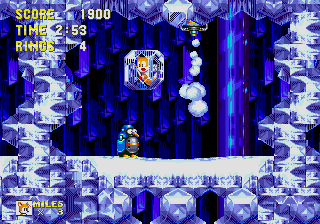 Sonic the Hedgehog 3 (1994) |
 Ecco: The Tides of Time (1994) |
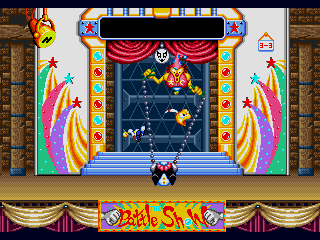 Dynamite Headdy (1994) |
 Sonic & Knuckles (1994) |
 The Story of Thor / Beyond Oasis (1994 / 1995) |
 Ristar (1995) |
 Comix Zone (1995) |
 Vectorman (1995) |
 Vectorman 2 (1996) |
 Sonic 3D: Flickies' Island / Sonic 3D Blast (1996) |
 Zaxxon (1992) |
 Tip Top (1983) |
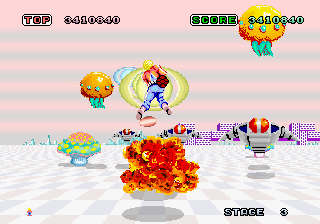 Space Harrier (1985) |
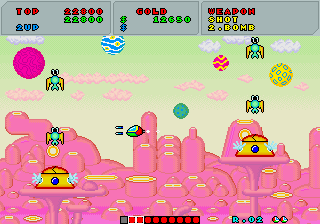 Fantasy Zone (1986) |
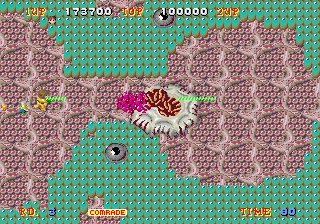 Alien Syndrome (1987) |
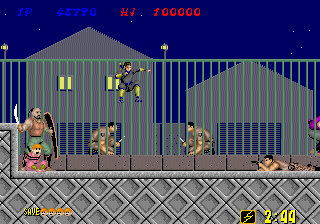 Shinobi (1987) |
 Altered Beast (1988) |
|
|
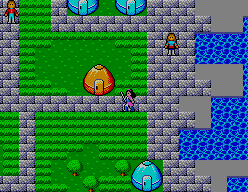 Phantasy Star (1987 / 1988) |
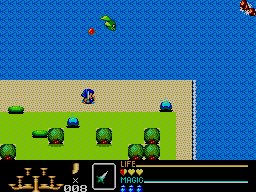 Golden Axe Warrior (1991) |
|
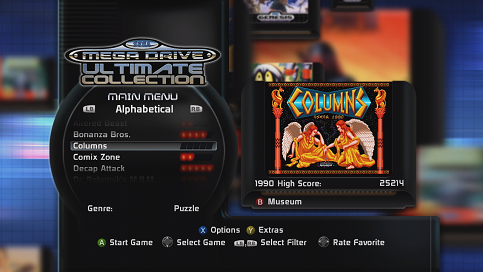
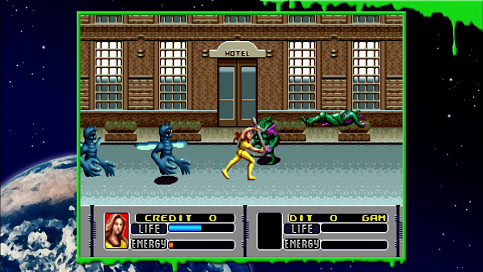
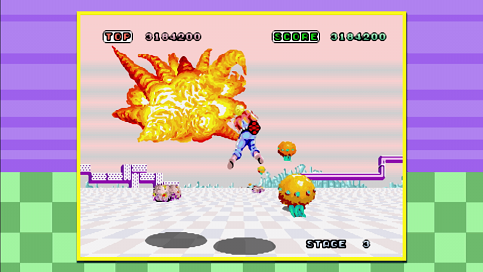
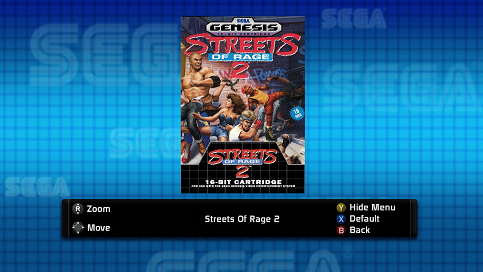

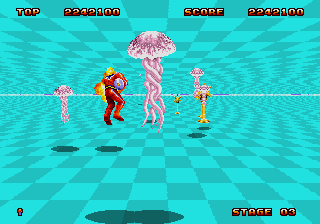 Space Harrier II (1988 / 1989) All Versions |
 Super Thunder Blade (1988 / 1989) All Versions |
 Altered Beast (1988 / 1989) All Versions |
 Alex Kidd in the Enchanted Castle (1989) All Versions |
 Phantasy Star II (1989 / 1990) All Versions |
 Sword of Vermilion (1989 / 1991) All Versions |
 Golden Axe (1989) All Versions |
 The Revenge of Shinobi (1989) All Versions |
 Phantasy Star III: Generations of Doom (1990 / 1991) All Versions |
 Columns (1990) All Versions |
 ESWAT: City Under Siege (1990) All Versions |
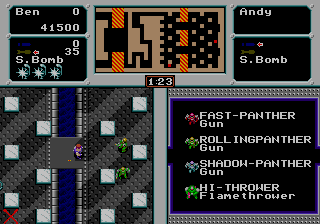 Crack Down (1990 / 1991) All Versions |
 Shadow Dancer: The Secret of Shinobi (1990 / 1991) All Versions |
 Wonder Boy III: Monster Lair (1990) Steam / PS4 / Xbox One Only |
 Shining in the Darkness (1991) All Versions |
 Gain Ground (1991) All Versions |
 Flicky (1991) All Versions |
 Bonanza Bros. (1991) All Versions |
 Fatal Labyrinth (1991) All Versions |
 Sonic the Hedgehog (1991) Removed from Steam 2022 |
 Alien Storm (1991) All Versions |
 Streets of Rage (1991) All Versions |
 Decap Attack (1991) All Versions |
 ToeJam & Earl (1991 / 1992) All Versions |
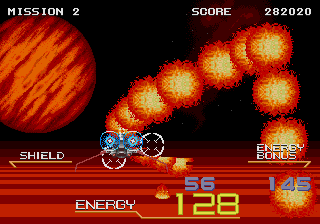 Galaxy Force II (1991 / 1992) All Versions |
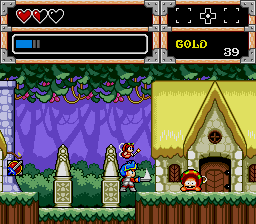 Wonder Boy in Monster World (1991 / 1992) Steam / PS4 / Xbox One Only |
 Golden Axe II (1991 / 1992) All Versions |
 Shining Force: The Legacy of Great Intention (1992 / 1993) All Versions |
 Kid Chameleon (1992) All Versions |
 Landstalker: The Treasures of King Nole (1992 / 1993) All Versions |
 Sonic the Hedgehog 2 (1992) Removed from Steam 2022 |
 Bio-Hazard Battle (1992) All Versions |
 Ecco the Dolphin (1992 / 1993) Steam only |
 Streets of Rage II (1992 / 1993) All Versions |
 Golden Axe III (1993) All Versions |
 Shinobi III: Return of the Ninja Master (1993) All Versions |
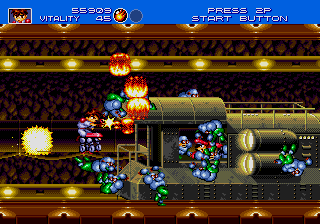 Gunstar Heroes (1993) All Versions |
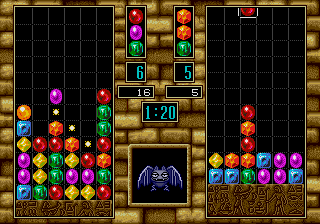 Columns III: Revenge of Columns (1993 / 1994) All Versions |
 Shining Force II (1993 / 1994) All Versions |
 Sonic the Hedgehog Spinball (1993) All Versions |
 Phantasy Star IV: The End of the Millennium (1993 / 1995) All Versions |
ToeJam & Earl in Panic on Funkotron (1993) All Versions |
 Dr. Robotnik's Mean Bean Machine (1993) All Versions |
 Ecco: The Tides of Time (1994) Steam only |
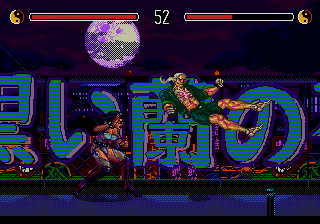 Eternal Champions (1993 / 1994) Steam only |
 Streets of Rage 3 (1994) All Versions |
 Dynamite Headdy (1994) All Versions |
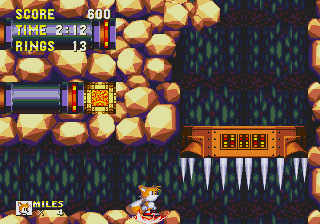 Sonic the Hedgehog 3 & Knuckles (1994) Steam only |
 The Story of Thor / Beyond Oasis (1994 / 1995) All Versions |
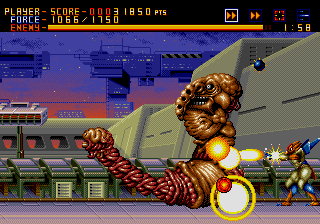 Alien Soldier (1995) All Versions |
 Ristar (1995) All Versions |
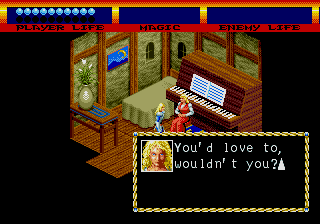 Light Crusader (1995) All Versions |
 Comix Zone (1995) All Versions |
 Ecco Jr. (1995) Steam only |
 Vectorman (1995) All Versions |
 Vectorman 2 (1996) All Versions |
|
|
 Sonic 3D: Flickies' Island / Sonic 3D Blast (1996) All Versions |
 Virtua Fighter 2 (1997) All Versions |
|
| Steam | Playstation 4 | Xbox One | Switch | Delisted from Steam in... | |
|---|---|---|---|---|---|
| Ecco the Dolphin |  y y |
 n n |
 n n |
 n n |
|
| Ecco: The Tides of Time |  y y |
 n n |
 n n |
 n n |
|
| Ecco Jr. |  y y |
 n n |
 n n |
 n n |
|
| Eternal Champions |  y y |
 n n |
 n n |
 n n |
|
| Sonic the Hedgehog |  y y |
 y y |
 y y |
 y y |
|
| Sonic the Hedgehog 2 |  y y |
 y y |
 y y |
 y y |
|
| Sonic the Hedgehog 3 & Knuckles |  y y |
 n n |
 n n |
 n n |
|
| Wonder Boy III: Monster Lair |  y y |
 y y |
 y y |
 n n |
|
| Wonder Boy in Monster World |  y y |
 y y |
 y y |
 n n |
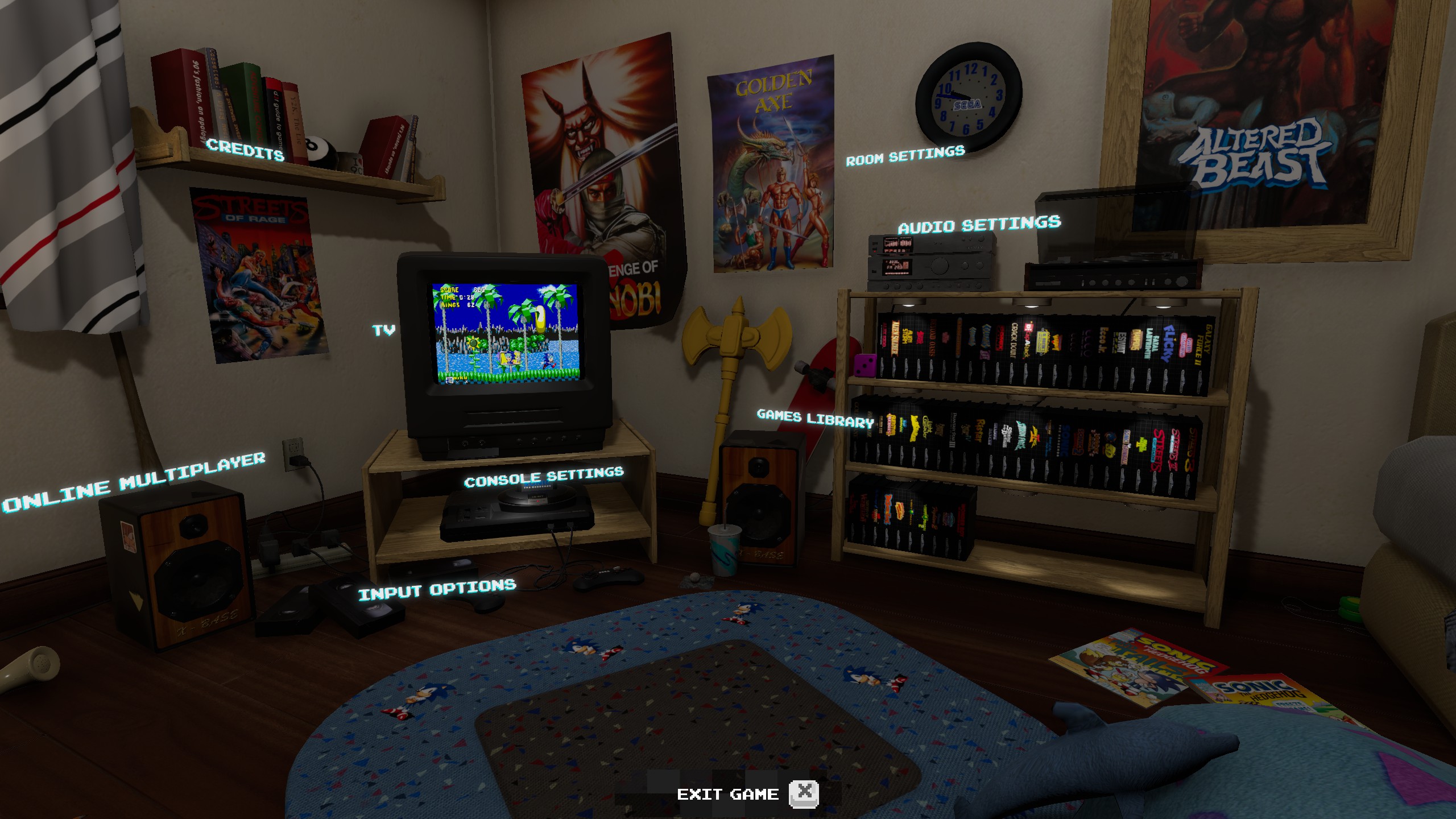


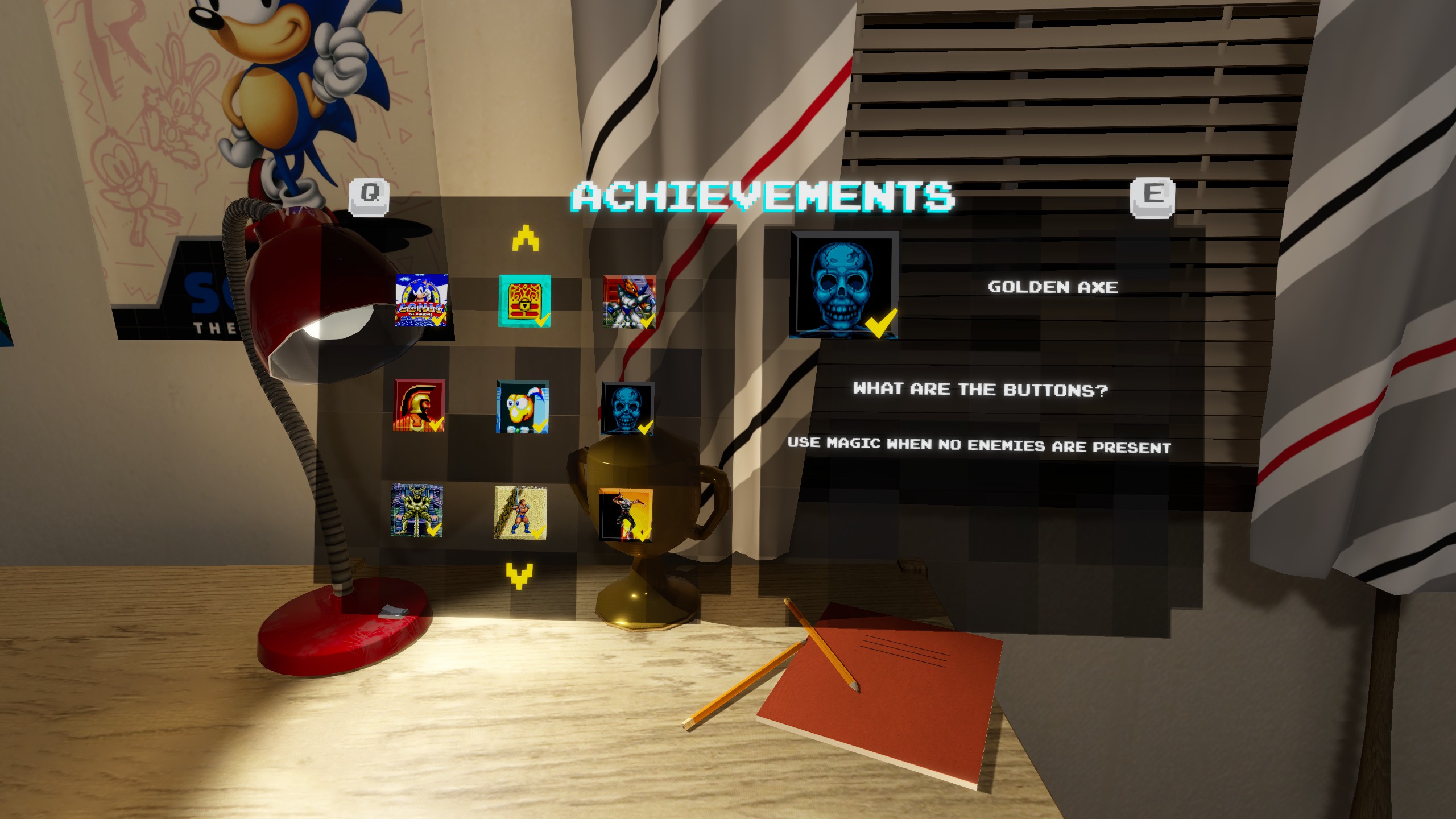
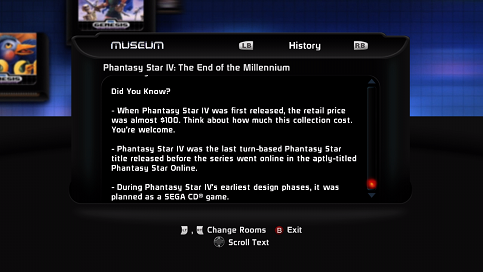
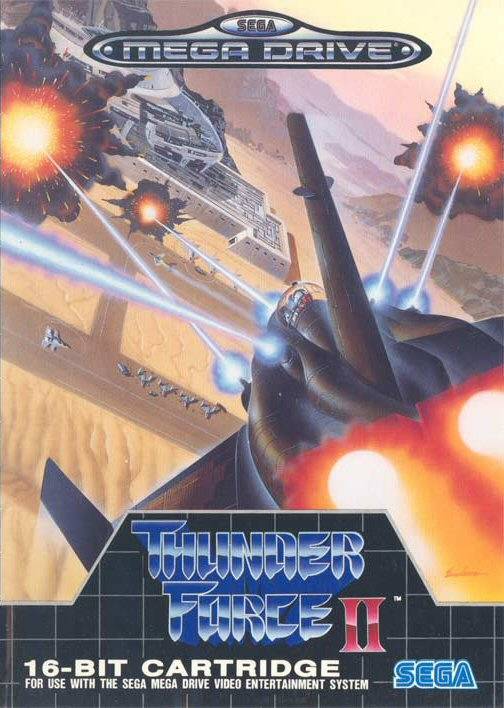
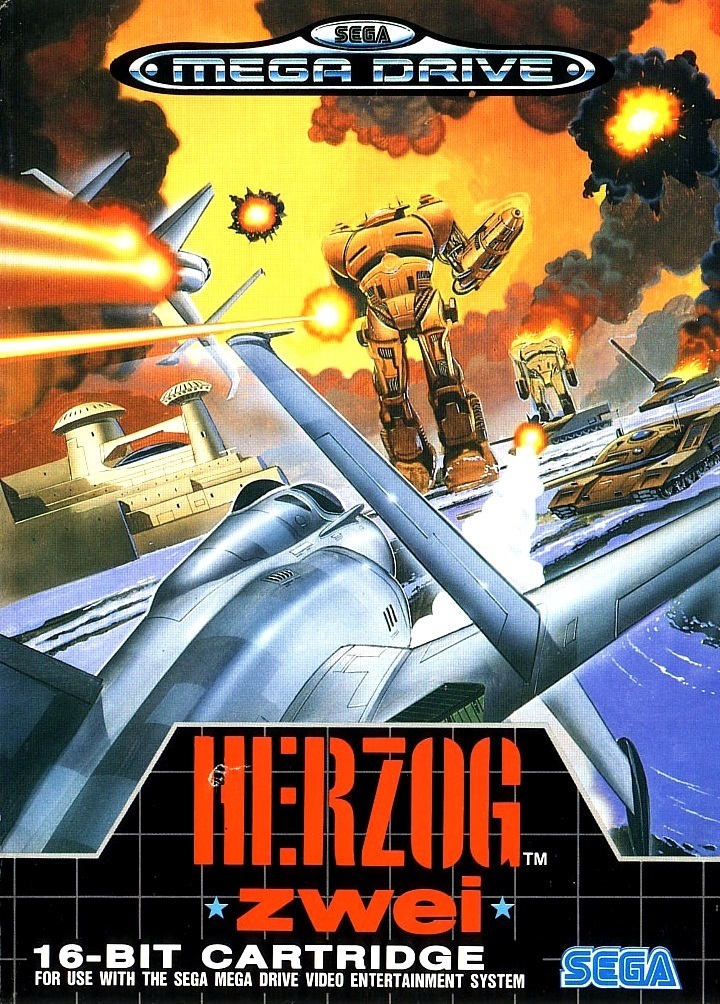



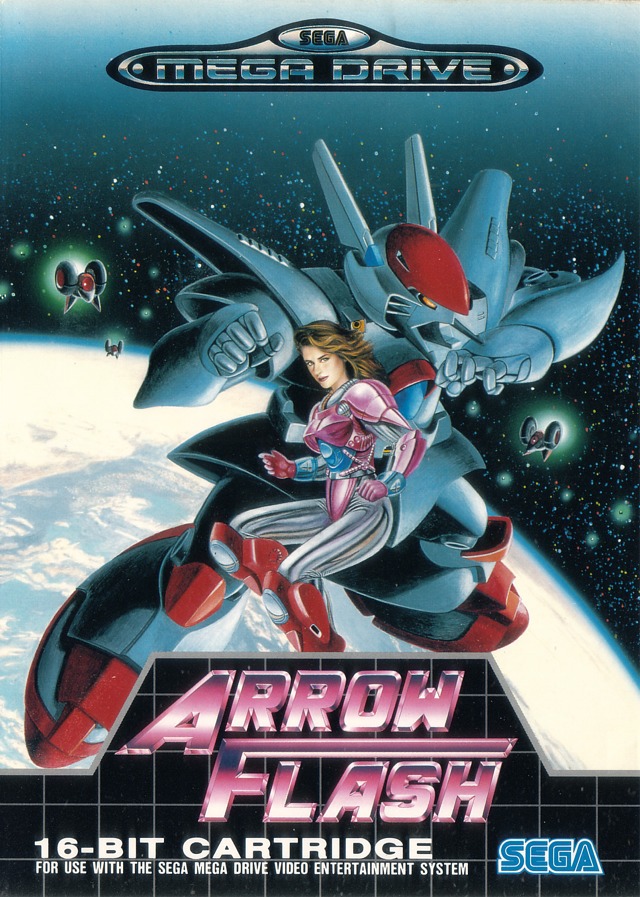
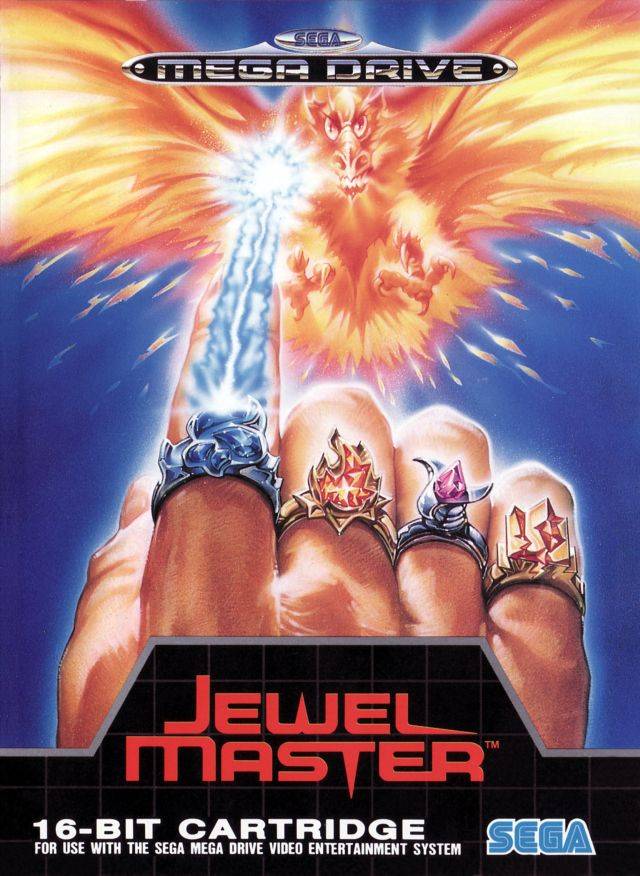
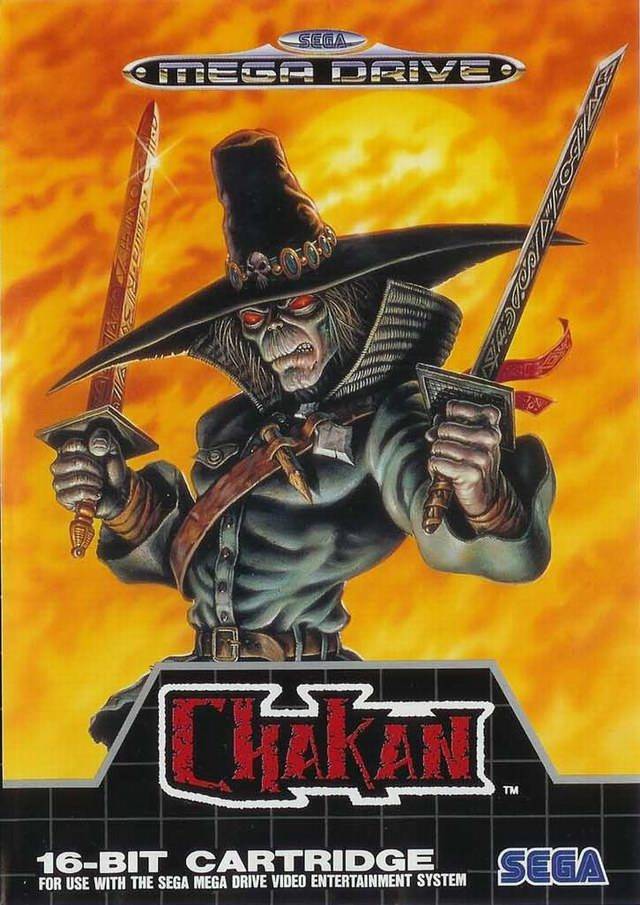

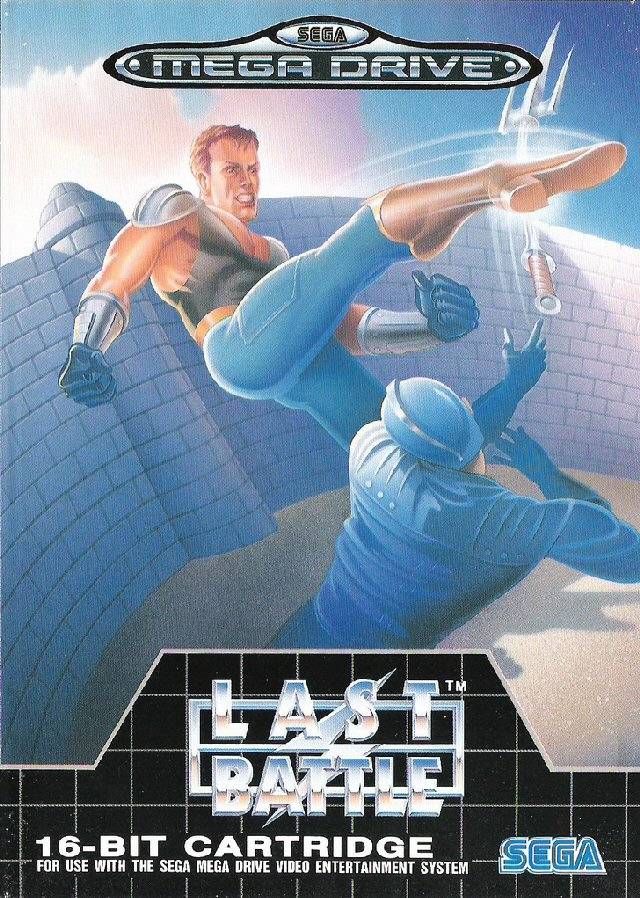
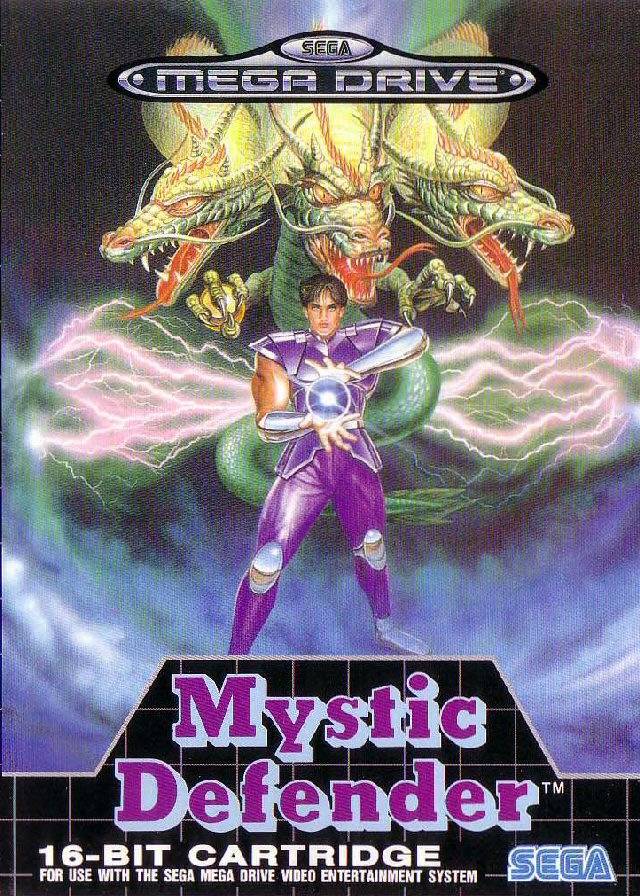
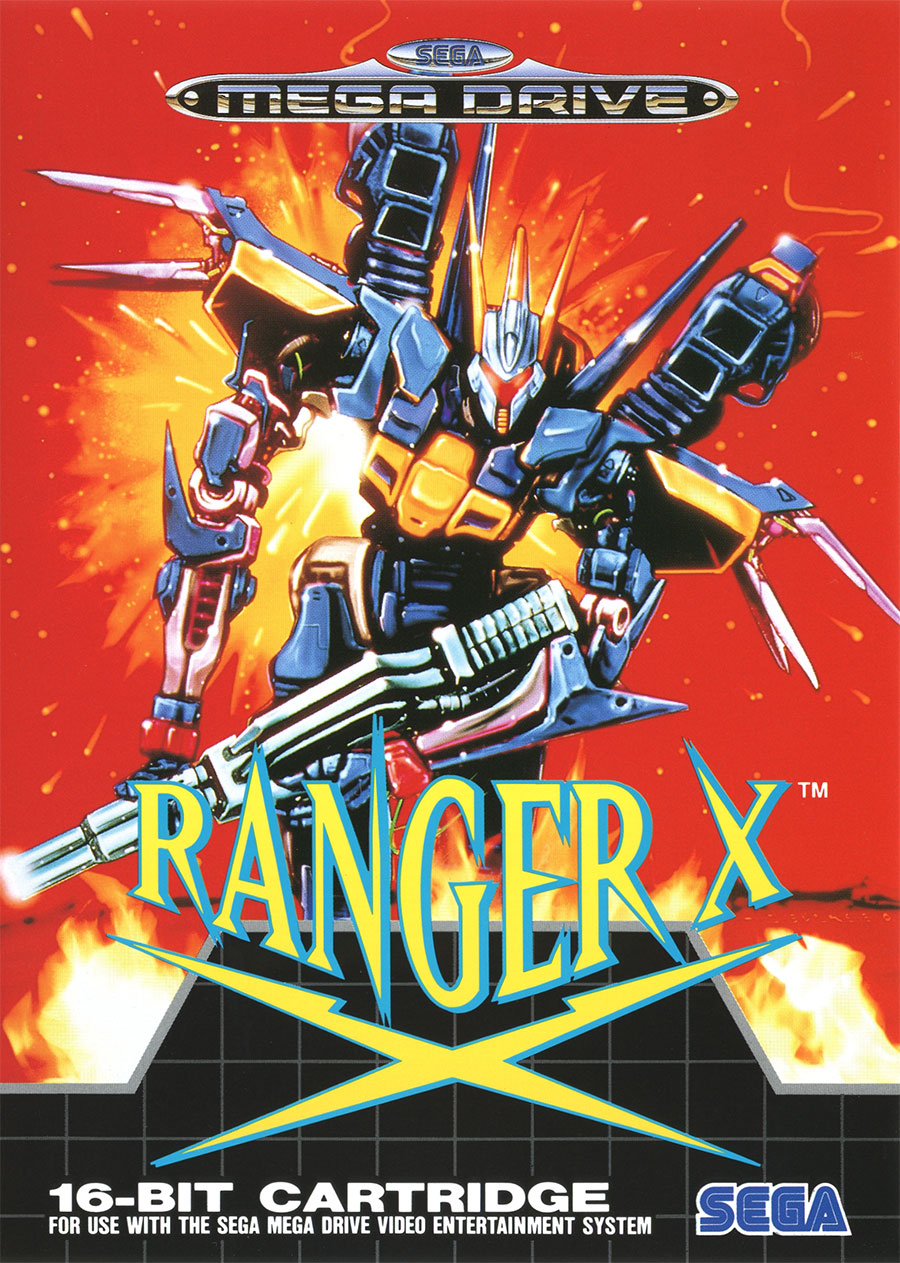


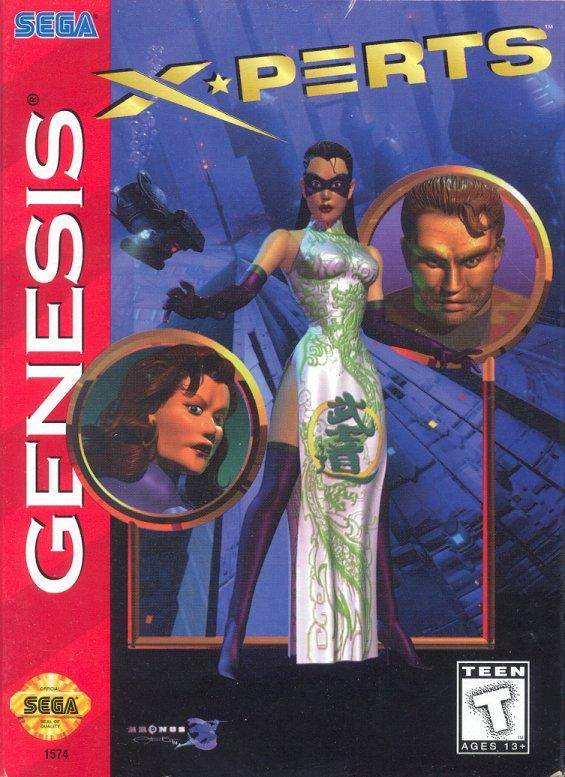
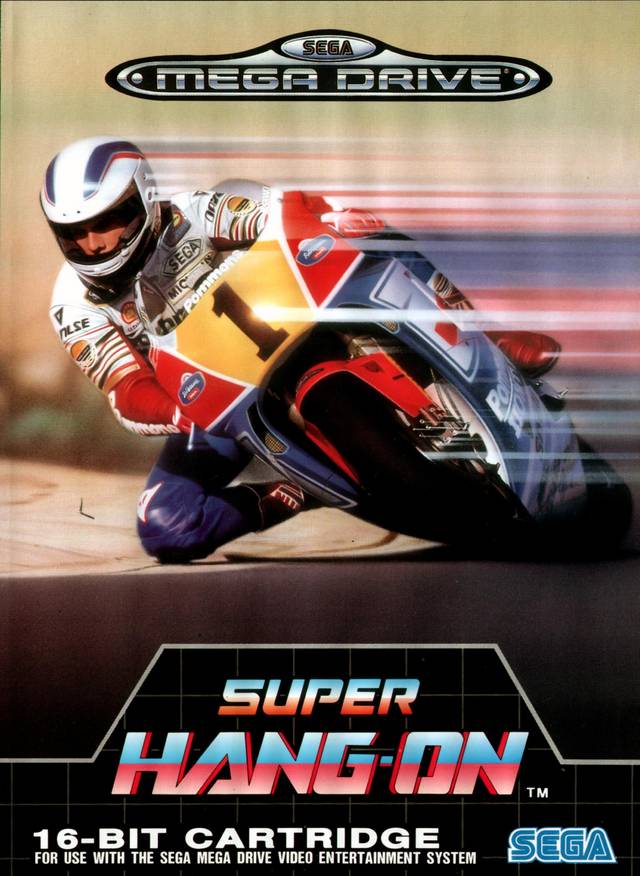


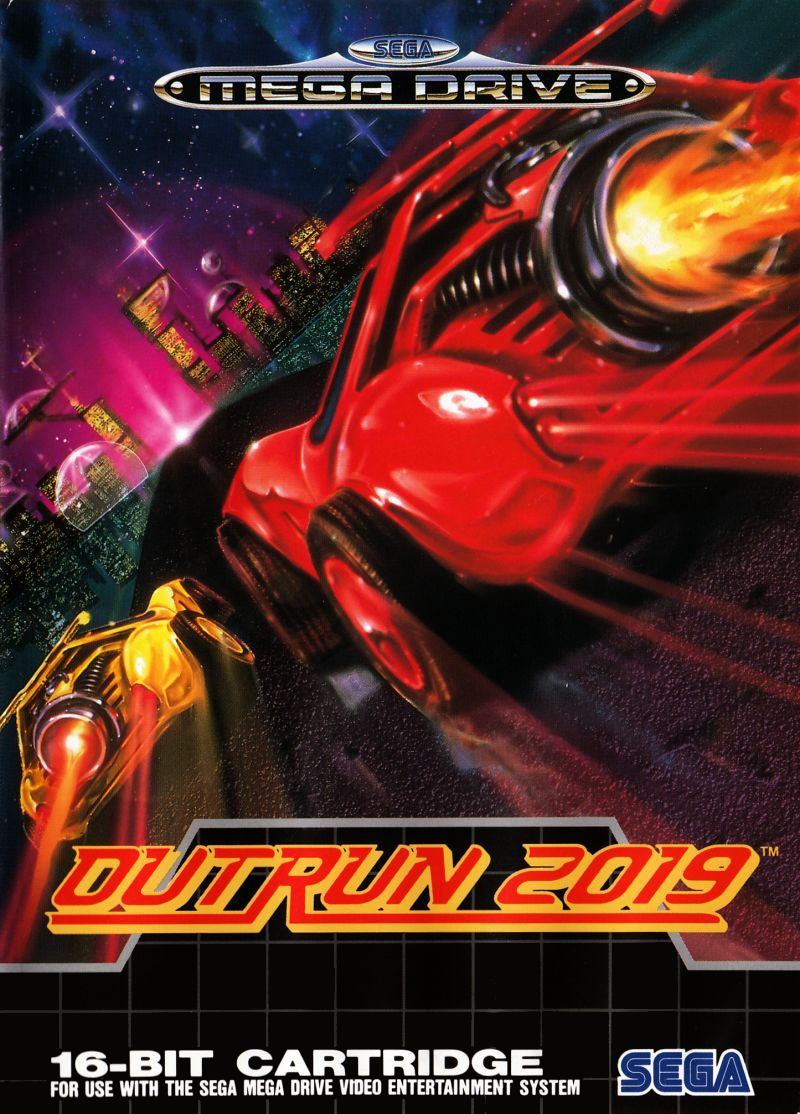


| Publisher | Smash Pack | PS2 / PSP | PS3 / 360 | Modern | |
|---|---|---|---|---|---|
| Thunder Force II | Sega |  n n |
 n n |
 n n |
 n n |
| Altered Beast | Sega |  y y |
 y y |
 y y |
 y y |
| Space Harrier II | Sega |  n n |
 n n |
 n n |
 y y |
| Super Thunder Blade | Sega |  n n |
 y y |
 y y |
 y y |
| Ghouls 'n Ghosts | Capcom |  n n |
 n n |
 n n |
 n n |
| Golden Axe | Sega |  y y |
 y y |
 y y |
 y y |
| Target Earth | extreme |  n n |
 n n |
 n n |
 n n |
| Columns | Sega |  y y |
 y y |
 y y |
 y y |
| ESWAT: City Under Siege | Sega |  n n |
 n n |
 y y |
 y y |
| The Revenge of Shinobi | Sega |  y y |
 n n |
 n n |
 y y |
| Strider | Capcom |  n n |
 n n |
 n n |
 n n |
| Sword of Vermillion | Sega |  n n |
 y y |
 n n |
 y y |
| Flicky | Sega |  n n |
 y y |
 y y |
 y y |
| Alien Storm | Sega |  n n |
 n n |
 y y |
 y y |
| Streets of Rage | Sega |  n n |
 n n |
 y y |
 y y |
| ToeJam & Earl | Sega |  n n |
 n n |
 n n |
 y y |
| MERCS | Capcom |  n n |
 n n |
 n n |
 n n |
| M.U.S.H.A. | Sega |  n n |
 n n |
 n n |
 n n |
| Golden Axe II | Sega |  n n |
 y y |
 y y |
 y y |
| Alisia Dragoon | Game Arts |  n n |
 n n |
 n n |
 n n |
| Kid Chameleon | Sega |  n n |
 y y |
 y y |
 y y |
| Zero Wing | Tatsujin |  n n |
 n n |
 n n |
 n n |
| Super Fantasy Zone | Sega |  n n |
 n n |
 n n |
 n n |
| Sonic the Hedgehog 2 | Sega |  n n |
 y y |
 y y |
 y y |
| Ecco the Dolphin | Sega |  n n |
 y y |
 y y |
 y y |
| Streets of Rage II | Sega |  y y |
 n n |
 y y |
 y y |
| Shining Force: The Legacy of Great Intention | Sega |  y y |
 n n |
 y y |
 y y |
| Gunstar Heroes | Sega |  n n |
 n n |
 n n |
 y y |
| Shinobi III: Return of the Ninja Master | Sega |  n n |
 y y |
 y y |
 y y |
| Street Fighter II: Special Champion Edition | Capcom |  n n |
 n n |
 n n |
 n n |
| Landstalker | Sega |  n n |
 n n |
 n n |
 y y |
| Sonic the Hedgehog Spinball | Sega |  n n |
 n n |
 y y |
 y y |
| Dr. Robotnik's Mean Bean Machine | Sega |  n n |
 n n |
 y y |
 y y |
| ToeJam & Earl in Panic on Funkotron | Sega |  n n |
 n n |
 n n |
 y y |
| Castlevania: Bloodlines | Konami |  n n |
 n n |
 n n |
 n n |
| Contra: Hard Corps | Konami |  n n |
 n n |
 n n |
 n n |
| Earthworm Jim | Interplay |  n n |
 n n |
 n n |
 n n |
| Dynamite Headdy | Sega |  n n |
 n n |
 y y |
 y y |
| Mega Man: The Wily Wars | Capcom |  n n |
 n n |
 n n |
 n n |
| Shining Force II | Sega |  n n |
 n n |
 y y |
 y y |
| Phantasy Star IV: The End of the Millennium | Sega |  n n |
 y y |
 y y |
 y y |
| Ristar | Sega |  n n |
 y y |
 y y |
 y y |
| Beyond Oasis | Sega |  n n |
 y y |
 y y |
 y y |
| Crusader of Centy | Sega |  n n |
 n n |
 n n |
 n n |
| Light Crusader | Sega |  n n |
 n n |
 n n |
 y y |
| Alien Soldier | Sega |  n n |
 n n |
 n n |
 y y |
| Comix Zone | Sega |  n n |
 y y |
 y y |
 y y |
| Vectorman | Sega |  y y |
 y y |
 y y |
 y y |
| Virtua Fighter 2 | Sega |  n n |
 y y |
 n n |
 y y |
| Pulseman | Sega |  n n |
 n n |
 n n |
 n n |
